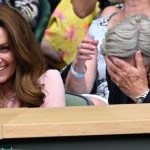Spending on each schoolchild’s education in England has suffered an unprecedented 14-year-freeze since the Conservatives came to power, according to Britain’s leading economics thinktank.
Funding per pupil is now at 2010 levels in real terms, the Institute for Fiscal Studies said in its latest analysis of school spending, while teacher pay was at about the same real-terms level as in 2001.
Investment in England’s ageing school buildings, many of which have been affected by the Raac – or crumbling concrete – crisis, is 25% lower in real terms than in the mid 2000s, the IFS analysis says.
The report, intended to inform debate in the lead-up to the general election, also flags that the government has allocated 40% less than its own assessment of how much is required to ensure school buildings are maintained in a fit state.
Paul Whiteman, the general secretary of the NAHT school leaders’ union, said: “This research shows in the starkest possible terms how schools have been sidelined for years when it comes to national priorities.”
Pepe Di’Iasio, the general secretary of the Association of School and College Leaders, said: “It’s shameful that there has been no growth in funding per pupil over 14 years, while at the same time schools have been battling a rapid increase in responsibilities and costs.”
Between 2010, when the Conservatives came to power in coalition with the Liberal Democrats, and 2019, total school spending in England rose by 1% in real terms, the IFS said, but as pupil numbers grew by 11% over this period, school spending per pupil actually fell by 9%.
Since 2019, there had been a £6bn (11%) real-terms increase in total spending, which brought per pupil funding back to 2010 levels. Under Labour governments from 1997 to 2010, the IFS said spending per pupil rose by an average of 5%-6% per year in real terms.
The IFS also highlights that a key factor in recent spending has been the 60% increase since 2015 in pupils with the highest levels of assessed special educational needs, which has taken up nearly half of the £7.6bn increase in school spending since 2015.
Looking ahead to the next parliament, the IFS said an incoming government might see the expected 5% drop in pupil numbers as an opportunity for savings, but warned that would almost certainly lead to school closures and job cuts.
Luke Sibieta, an IFS research fellow and author of the report, said: “On current plans, many other areas of public service spending appear to be facing cuts under either a Conservative or a Labour government.
“An incoming government might thus be tempted to cut school spending in response to falling pupil numbers. Realising such savings could be easier said than done as it would likely require workforce reductions and, perhaps, school closures.”
Daniel Kebede, the National Education Union general secretary, said: “This report sets out the damage done by 14 years of a failed government that has shown a total lack of care for the impact their policies have had on the English education system.
“The scale of this challenge to ensure children and young people get the education they deserve is immense. No sticking plaster solutions will work. Education must be a top priority in this election.”
A Conservative spokesperson said: “Education is the closest thing to a silver bullet there is, with the power to transform the lives of every child across the country.
“That is why we are boosting school funding to the highest level ever in real terms per pupil and delivering 60,000 more special educational needs school places, in addition to recruiting over 27,000 extra teachers since 2010.”












